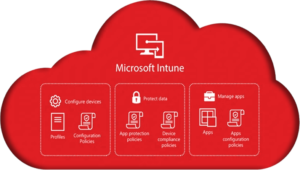As the New Year anticipation “hangover” wears off and resolutions become reality, many business owners are revisiting their business plans, profits and loss statements, and budgets. More pandemic-related stay-at-home orders many be in store, prompting many companies to extend their work-from-home plans indefinitely through the end of 2021. These companies are also making difficult decisions about cutting resources that may be underutilized during the pandemic. Employee wellness programs and benefits are one area in which business owners should avoid cutting costs, if possible.
Many managers understand the strain employees are under, as they likely face the same challenges juggling home life and remote work in the same space. Nonetheless, there is still a stigma surrounding mental health in the workplace. Employees at every level of your organization may be experiencing challenges you may have never known about before. They can be especially afraid to ask for help in these times due to a precarious economy and job market.
This year, it will be crucial to look after the wellness of your company by looking after the wellness of your employees.
1. Create a Top-Down Culture of Wellness
When leaders at every level (not just HR) send health-and-wellness messages and encourage open discussion of personal challenges, they send a message to employees that it is safe to talk with management about struggles and issues they may be facing, without fear of being put on probation or performance plans. It is then crucial that leaders honor their commitments.
2. Support Managers More Than Ever
Managers are feeling pressure on multiple fronts by supporting employees who do come to them for help; maintaining deliverables for upper management and key stakeholders; and facing many of the same struggles adapting to the remote work environment. Empower managers by giving them the autonomy to make decisions about their team, and create protected time and space for managers to express their needs freely to you and amongst themselves. Without a break room or physical water cooler, it’s harder for new managers to learn from the leadership and experiences of more tenured peers.
Support your line managers by investing in management development and coaching, as well as resources on effective counseling. Unless your organization is a mental health clinic or social services organization, it’s unlikely that managers have a background in crisis counseling and they will need support. It’s crucial to educate managers about appropriate steps to take if an employee indicates they are dealing with a crisis.
Creating a repository or toolkit of resources for managers may help to reduce redundant requests, all while protecting employees who may feel uncertain about reaching out.
3. Stay Active
Short winter days and reduced sunlight hours can impact employee mental health. Encourage your teams to schedule breaks to get outside while the sun is out. Consider creating an opt-in weekly “walk-and-talk”. One day a week, employees from various departments of the company can be paired up to take walks and informally chat on the phone, boosting camaraderie and Vitamin D at the same time. Or, maybe one of your team meetings can be a walking meeting.
Perhaps your company enjoys a more competitive atmosphere. Try weekly steps contests among individuals or between rivaling departments. There’s even a Microsoft Teams app called Health Hero to make tracking and participating in office fitness challenges easy and fun for all!
4. Revisit Your Benefits
Your HR department likely has guides, one-pagers, or even benefits portals that employees have access to, but there are a few additional benefits to consider:
- Does your benefits plan cover telemedicine and tele-counseling services? If it doesn’t, 2021is the time to make it happen.
- Do you offer a gym reimbursement? If gyms in your area are to remain closed, consider allowing employees to use their reimbursement towards mindfulness or meditation programs, approved in-home fitness memberships, or bicycle purchases to encourage socially distant fitness activities to stay well inside and out.
- Most companies offer a free and anonymous “Employee Assistance Program” hotline, though keep in mind it’s natural for employees to distrust the service or expect it to be inadequate for their needs.
- Have executives and managers sample the resources you already offer, and any new ones you may want to offer, and share with employees how these leaders have personally used the new benefits to stay well during this time.
It is incredibly important to make your employees aware of resources and to create a repository they can visit for information at any time, confidentially, without having to ask for access. One great way to do this is to create a company-wide wellness wiki on Microsoft Teams or your Sharepoint server.
5. Make 2021 Different
Considering all the tools at our disposal as business owners, pandemic-related support programs, and the many lives that depend on the jobs we have created, we should not take the people that make our company function for granted. Find out which resources may be available to your business to help offset some of the costs of doing right by your teams.
Windows Management Experts’ mission is to help people, businesses, and communities thrive by providing the talent and opportunities that empower them for success. We’re a Microsoft Certified Partner with gold competency in datacenter, device and deployment, over 30 years’ combined experience in Microsoft Cloud Infrastructure and Management Solutions , and guiding principles of operating with integrity.
While we are prepared at all times to offer our technical expertise in the field, we are also embracing 2021 with new levels of remote readiness. Contact us today for expert assistance equipping your remote workforce, licensing new software to power your company’s collaboration, and so much more.





